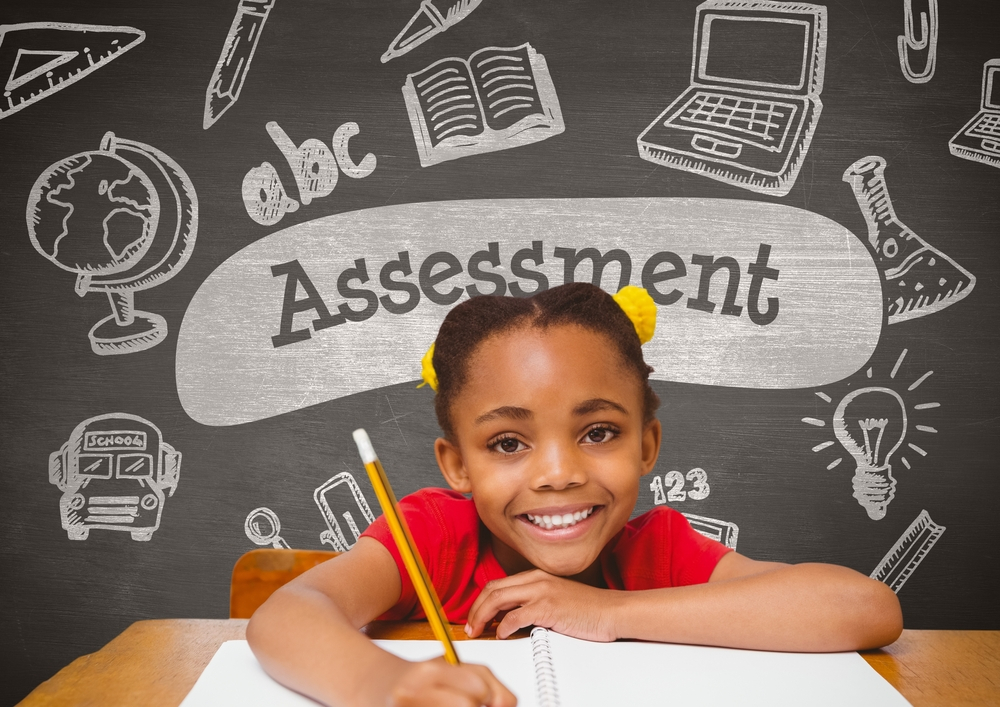
Understanding the nuanced stages of writing development in early children is critical for educators and parents who aim to support young learners in their journey towards literacy. Writing, a complex skill that involves both cognitive and motor challenges, evolves in predictable stages as children grow and develop. It’s a process that starts long before a child picks up a pencil and makes their first deliberate mark on paper. In the earliest years, every scribble and shape represents a step towards communication through written language.
Early Marks: The Foundations of Writing
Before formal writing begins, young children engage in what educators refer to as “pre-writing” activities. These include the marks and scribbles made during play or exploration. Although these may appear random, they are the child’s initial attempts at expressing ideas visually. It’s a foundational stage where children develop fine motor skills and the conception that marks can convey meaning.
Symbolism and the Emergence of Letters
As children’s cognitive abilities progress, they begin to understand that specific shapes have consistent meanings. This is when the random marks start to transform into recognizable symbols and eventually, the letters of the alphabet. In this stage, children’s drawings often contain a mixture of real letters and invented symbols, reflecting their growing awareness of the conventions of writing.
The Role of Environmental Print
The print that children see around them in their daily lives, known as environmental print, is crucial in this early period. It includes things like logos, labels, and signs. This print is often the first reading and writing children recognize, and it helps them make the connection between the written word and its meaning.
Phonetic Writing: Connecting Sounds to Symbols
As children’s phonological awareness— the ability to hear and manipulate the sounds in spoken language—develops, they begin to connect sounds to the symbols they write, a stage known as phonetic writing. It is common in this stage to see writing that reflects the child’s understanding of sound-letter correspondence, even if it doesn’t follow conventional spelling.
Conventional Writing: Mastery of Written Expression
With continued practice and guidance, children begin to master the standard rules of writing, including spelling, grammar, punctuation, and the structure of written language. This stage is critical as children start to write with the reader in mind, learning to craft messages that can be understood by others.
Cultivating an Environment That Fosters Writing Development
Creating a nurturing environment is essential for early childhood writing development. Access to varied writing materials, positive reinforcement, and exposure to adult writing behavior all contribute to a child’s writing education. When children have opportunities to practice writing in a supportive setting, they are more likely to advance through the stages with confidence.
The journey from scribbles to coherent sentences is a remarkable transformation that occurs over several years. Recognizing and appreciating the stages of writing development can empower adults to support children effectively as they evolve into proficient writers. By providing the right tools, encouragement, and examples, adults play an essential role in fostering early literacy skills that will serve as a foundation for a child’s educational career and beyond.
By delving into the intricate stages of early childhood writing development, we equip ourselves with the knowledge to guide the next generation as they build one of the most fundamental skills for their academic and personal success.

Understanding the Importance of Recognizing Writing Development Stages in Early Childhood
The ability to write is not innate; it is a learned skill that manifests through various developmental stages in early childhood. Recognizing and understanding these stages is paramount for several reasons:
Facilitating Targeted Learning
Early Identification: Recognizing the stages of writing allows educators and parents to identify where a child is in their development. This early detection is crucial for providing appropriate support or intervention if necessary.
Tailored Instruction: Different stages require different teaching strategies. By understanding these phases, adults can tailor instructional methods to the child’s current abilities and challenges.
Developmental Milestones: Each stage of writing development represents a set of milestones that children should ideally reach. Awareness of these milestones helps adults set realistic expectations and goals for writing progress.
Enhancing Educational Outcomes
Building Confidence: When adults understand and acknowledge the stage a child is in, they can offer encouragement that is specific to the child’s current achievements, bolstering their confidence and motivation.
Promoting Mastery: As children progress through the stages at their own pace, recognizing their level allows for the reinforcement of skills mastered and the introduction of new, more complex tasks at appropriate times.
Supporting Holistic Development
Cognitive Development: Writing is closely linked to cognitive development. Knowledge of the writing stages informs adults of a child’s cognitive milestones and how they relate to written expression.
Language Skills: Recognizing a child’s writing stage offers insights into their language development, including vocabulary acquisition, grammar understanding, and the ability to communicate ideas effectively.
Creating Effective Learning Environments
Resource Allocation: Understanding the stages helps in deciding which resources and materials will be most beneficial. For example, children in the earliest stages might need materials that encourage fine motor skills, while those in later stages might benefit from spelling games and grammar exercises.
Responsive Curriculum: By being aware of the progression stages, educators can design curriculums that adapt and respond to the evolving needs of the children, keeping them engaged and challenged.
Fostering Lifelong Skills
Literacy Foundation: Early writing ability lays the foundation for literacy. Recognizing and nurturing each stage contributes to building solid groundwork for future reading and writing proficiency.
Academic Success: The skills developed through writing are predictive of later academic success. Early intervention and support can, therefore, have long-term positive educational impacts.
Importance of Fine Motor Skills and Hand-Eye Coordination in the Pre-Writing Stage
The pre-writing stage is a pivotal point in a child’s journey to literacy, where the focus on fine motor skills and hand-eye coordination plays a central role. These skills are vital as they lay the groundwork for all future writing and academic tasks.
Fine Motor Skills: The Gateway to Writing Readiness
Muscle Development: Fine motor skills involve the use of small muscles in the hands and fingers. The development of these muscles is critical for a child’s ability to grasp and manipulate writing tools effectively.
Grip and Control: As children engage in activities like coloring, cutting, and threading, they learn to hold pencils correctly and apply varying degrees of pressure. This control is essential for producing the deliberate strokes needed for letter formation.
Coordination and Dexterity: Fine motor activities boost dexterity, allowing children to switch between different movements, such as the transition from drawing a circle to a straight line, which is foundational for writing letters and numbers.
Hand-Eye Coordination: Synchronizing Vision and Movement
Visual Tracking: Writing requires children to track the movement of their hand while drawing shapes or letters, ensuring that what they create on paper matches their mental intention.
Spatial Awareness: Good hand-eye coordination helps children understand the spatial relationship between objects, which translates to understanding how letters and words fit together on a page.
Precision and Accuracy: As children’s hand-eye coordination improves, so does their precision in writing, which is vital for legibility.
Building Blocks of Pre-Writing Skills
Activities that foster these developmental areas are crucial during the pre-writing stage. Here are some examples:
Play-Doh: Molding and shaping Play-Doh strengthens hand muscles and encourages creativity in shaping letters and numbers.
Bead Threading: Picking up and stringing beads improve pincer grip and coordination, fundamental for holding a pencil.
Drawing and Tracing: Using stencils and tracing activities helps children practice the control required to form letters and shapes.
Puzzles: Solving puzzles enhances problem-solving skills and fine motor precision, which are beneficial for writing.
The Role of Adults in Enhancing Motor Skills and Coordination
Adults play a crucial role in providing age-appropriate and engaging activities that enhance these skills.
Modeling: Demonstrate correct pencil grip and control in writing tasks.
Environment: Set up a writing-friendly space with a variety of tools like markers, crayons, and paper of different textures.
Encouragement: Positive reinforcement for attempts at writing inspires continued practice and improvement.
Recognizing the Long-Term Impact
Early mastery of fine motor skills and hand-eye coordination goes beyond writing.
Academic Success: These skills are linked to overall academic achievement, including areas like science (conducting experiments) and mathematics (aligning numbers and shapes).
Life Skills: Beyond academics, children use these skills for everyday tasks such as tying shoelaces, buttoning clothes, and using cutlery.
Investing time and resources into developing fine motor skills and hand-eye coordination sets children up for success in the pre-writing stage and beyond. This foundational work is not just about writing but also about equipping children with the necessary skills for their entire educational journey and daily life.

Emerging Writers: Nurturing the Budding Author
At the heart of early childhood writing development lies the stage of the ‘Emerging Writer.’ This pivotal phase is characterized by children beginning to explore writing as a form of communication and self-expression. It’s a time when the abstract symbols of letters and words start to take on concrete meanings, and the child’s understanding of language and its written form expands rapidly.
Defining the Emerging Writer Stage
This stage typically occurs in children aged between 3 and 5 years old but can vary depending on individual development and exposure to literacy. It is recognized by several key developmental characteristics:
Expanding Vocabulary: Children begin to use a wider range of words in their spoken language, which starts to translate into their writing attempts.
Understanding of Print Concepts: The child starts grasping the basic rules of print, such as reading and writing from left to right and understanding that words are separated by spaces.
Alphabet Knowledge: Recognition of letters and attempting to write them, often starting with the letters in their own name.
Initial Sound Matching: Children may write letters that correspond to the initial sounds of words they are trying to write. For example, they might write “C” for “cat.”
Characteristics of the Emerging Writer
This stage of writing development can be identified by observing specific behaviors and writings of the child:
Letter-Like Forms and Shapes: Children create symbols that are approximations of letters and show an understanding that writing is made up of these symbols.
Stringing Letters Together: Emergent writers begin to string letters together to create pseudo-words or attempt to mimic writing by creating long chains of letters.
First Real Words: They start to write real words, which are often high-frequency words such as ‘the,’ ‘is,’ or ‘and,’ or significant words like their name or ‘mom.’
Contextual Writing: Writing begins to emerge within the context, such as a child labeling a drawing with words or letters.
Experimentation with Sounds: Children experiment with sound-to-letter correspondence and may use inventive spelling, which phonetically represents spoken words.
Nurturing the Emerging Writer
To foster growth during this stage, certain practices can be particularly beneficial:
Literacy-Rich Environment: Provide a variety of reading materials and encourage regular interaction with books and print media.
Access to Writing Tools: Offer different writing tools, such as pencils, crayons, and markers, along with various types of paper.
Adult Modeling: Regularly model writing for various purposes, such as list-making or sending messages.
Interactive Writing: Engage in shared writing activities where the child participates in the writing process.
Developing Writers: Cultivating Progress and Proficiency
In the journey of early childhood writing, the stage of Developing Writers is both thrilling and critical. This phase sees young learners aged between 5 to 7 years old employing their expanding knowledge base to form coherent sentences and narratives. Here, we delve into the nuances of this stage and offer insights on how to effectively nurture a child’s burgeoning writing skills.
What to Expect from Developing Writers
A Developing Writer exhibits marked advancements in writing, showcasing the integration of earlier stages into more structured written communication. Key characteristics include:
Improved Spelling: Children in this stage make the leap from phonetic spelling to more accurate convention-based spelling, although they may still grapple with complex words.
Sentence Structure: Kids begin to create simple sentences, often starting with capital letters and ending with punctuation. They start understanding the concept of a subject and predicate within sentence composition.
Narrative Skills: There’s a notable shift from labeling pictures to writing short narratives or stories. These writings may feature a beginning, middle, and end, albeit in a rudimentary form.
Grammar Awareness: Basic grammar concepts take hold as they begin to recognize verb tenses and apply them in writing, although inconsistencies are common.
Vocabulary Expansion: With an increased vocabulary, children can express more complex ideas and emotions through their written words.
Readability: The legibility of handwriting improves, with more uniform and properly spaced letters and words.
Encouraging Progress in Developing Writers
Here are practical ways to support children in the Developing Writers stage:
Frequent Writing Opportunities: Provide daily writing exercises that can range from journals and storytelling to writing letters or creating lists.
Incorporate Technology: Introduce age-appropriate word processing tools to familiarize children with digital forms of writing, which often come with spell checks and other helpful features.
Engage in Collaborative Writing: Work together on writing projects, which can help a child learn about planning and structuring their work more effectively.
Stimulate Imaginative Thinking: Encourage imaginative play and discussions to fuel inventive story ideas that they can translate into their writing.
Expand Vocabulary: Introduce new words in context to help children incorporate a richer vocabulary into their writing. Word games and reading are excellent for this purpose.
Positive Feedback: Offer constructive feedback that focuses on strengths while gently correcting errors. This encourages children to take risks and try complex writing tasks.
Teach Editing Skills: Show children how to review and make changes to their writing, emphasizing that revision is a normal part of the writing process.
Grammar Games: Utilize educational games and activities that focus on sentence structure and grammar to reinforce correct usage in a playful way.
Legible Handwriting: Continue to practice handwriting to ensure that the physical act of writing remains comfortable and automatic.
Reading Connection: Integrate reading with writing; discussing stories or characters can inspire a child’s own writing endeavors.
Celebrate Achievements: Celebrate written work by creating opportunities to share it, such as a classroom “author’s chair” or family reading time.
The Developing Writers stage is rich with potential and growth, and with the right support, children can flourish as capable and confident writers. By understanding the characteristics of this phase and the ways to foster progress, educators and parents can play a pivotal role in a child’s writing development.

Supporting Writing Development: Strategies for Parents and Educators
The development of writing skills in early childhood is a fundamental aspect of a child’s education that lays the groundwork for future academic success. As children progress through the various stages of writing development, it is crucial that both educators and parents understand how to support them effectively. Here are some practical tips and activities that can be implemented to nourish a child’s writing journey:
Reading and Writing Connection
Read Aloud: Regularly read to children to help them make the connection between spoken and written words. Choose books with rich language and engaging plots.
Discuss Texts: After reading, have conversations about the book. This helps children think about story structure and can inspire their writing.
Interactive Writing Activities
Shared Writing: Collaborate on writing projects where the child contributes to the content while the adult does the physical writing. This can include making grocery lists, writing cards, or crafting simple stories.
Story Prompts: Provide story starters or prompts that spark imagination and encourage creative writing.
Encouraging Autonomy and Choice
Writing Choices: Give children the choice of what to write through various prompts and topics that interest them. This increases motivation and investment in their writing.
Independent Writing Time: Set aside specific times during the day dedicated to writing, where they can write freely on topics of their choice.
Strengthening Fine Motor Skills
Motor Skill Activities: Integrate activities that strengthen fine motor skills such as playing with clay, stringing beads, or using scissors.
Writing Utensil Variety: Offer a variety of writing tools, such as crayons, markers, and pencils, to keep things exciting and cater to different grip strengths.
Expanding Vocabulary
Word Games: Engage children in word games that build vocabulary, such as Scrabble Junior, Boggle, or online vocabulary games.
Word Walls: Create word walls in the classroom or at home with new vocabulary words learned from readings or conversations.
Promoting Proper Pencil Grip and Writing Technique
Grip Aids: For children struggling with pencil grip, consider using grip aids or ergonomic writing instruments designed for better control.
Demonstrations: Show proper grip and writing techniques through personal demonstration, and gently correct children as they practice.
Crafting an Encouraging Environment
Writing Space: Designate a comfortable and quiet writing space with an appropriately sized table and chair.
Offering Constructive Feedback
Positive Reinforcement: Focus on what the child has done well in their writing before offering suggestions for improvement.
Mini-Lessons: Based on observations of a child’s writing, introduce mini-lessons targeting specific areas for growth, such as punctuation use or story sequencing.
Integrating Technology
Educational Apps: Introduce children to educational apps and games that focus on writing skills and language development.
Word Processing Tools: Encourage older children to use word processing software, which can help with spelling and grammar, and can also make the editing process easier.
Writing Across the Curriculum
Cross-Disciplinary Writing: Incorporate writing tasks in other subject areas like science (lab reports), social studies (historical diaries), or art (artist statements).
Sharing and Celebrating Writing
Author’s Chair: Create opportunities for children to share their writing with peers or family members to foster pride in their work and encourage public speaking skills.
Publishing: Compile children’s works into a class book, blog, or bulletin board display to show that their writing is valued.
Consistent Practice and Patience
Daily Writing: Encourage a daily practice that allows children to develop their writing skills at their own pace.
Patience: Understand that writing development is a process and that each child will progress in their own time.
It’s essential to keep in mind that children develop writing skills at different rates, and what works well for one child may not be as effective for another. Flexibility and observation are key in determining the most suitable support strategies.
Nurturing the Path to Literacy: Reinforcing the Building Blocks of Writing Development
The journey of a child’s writing development is a complex progression, where each stage lays an essential foundation for the next. As we have traversed through the various stages of writing development in early childhood, it is evident how critical the role of informed adults is in nurturing this process. In our conclusion, we encapsulate the primary insights and underscore the importance of supportive practices that bolster a child’s path to becoming a proficient writer.
Key Takeaways on Writing Development in Early Childhood
Development Stages: Understanding that writing development unfolds in a series of predictable stages helps us provide the appropriate support. Recognizing a child’s current stage, from making early marks to the emergence of letters and phonetic writing, all the way to conventional writing and mastery, is vital for facilitating targeted learning.
Significance of Fine Motor Skills: Developing fine motor skills and hand-eye coordination is foundational in the pre-writing stage. Activities that strengthen these skills, such as molding with Play-Doh or threading beads, are instrumental in preparing children for the physical demands of writing.
Environmental Print Exposure: The role of environmental print in introducing children to the concept of words and their meanings cannot be overstated. Regularly seeing and interacting with print in the environment aids in bridging the gap between spoken and written language.
Phonetic Writing and Sound Symbolism: Children’s ability to link sounds to symbols marks a significant leap towards conventional writing. Phonetic writing demonstrates their growing understanding of how language is represented on paper.
Holistic Support: Encouraging writing development involves more than just the act of writing itself. Cognitive and language skills are also developing in tandem. Supportive practices enrich a child’s vocabulary, grammar understanding, and overall communication abilities.
Create a Literacy-Rich Environment
Access to Materials: Ensure children have access to a variety of writing instruments and paper types to experiment with writing.
Visible Print: Display environmental print around learning and play areas to naturally introduce children to the concept of reading and writing.
Foster Engagement with Language
Read Aloud Sessions: Regularly read to children, discussing the text to develop their understanding of story structure and language.
Interactive Writing Activities: Engage in shared writing activities, where children can contribute to creating stories, lists, or letters.
Encourage Fine Motor Development
Motor Skill Exercises: Incorporate activities that focus on the development of fine motor skills to enhance a child’s capability to write with ease.
Emphasize the Phonics Connection
Sound Matching Games: Utilize games and activities that reinforce the relationship between sounds and letters to support phonetic writing skills.
Provide Constructive Feedback
Positive Reinforcement: Focus on achievements before introducing areas for growth. This approach builds confidence and resilience in young writers.
Integrate Technology Wisely
Educational Apps: Introduce age-appropriate writing and reading apps that offer interactive learning experiences.
Word Processing: Use technology to familiarize older children with digital writing tools, aiding in the development of spelling and grammar.
Celebrate Progress
Writing Displays: Showcase children’s written work in the classroom or at home. This recognition validates their efforts and encourages continual improvement.
Be Patient and Adaptable
Customized Learning: Adapt strategies and activities to suit the individual needs and pace of each child’s writing development.
Encouraging writing development is a multifaceted approach that extends beyond mere practice. It involves crafting an environment ripe for exploration, expression, and error, where children feel safe to experiment with language and refine their skills. As the digital landscape evolves, integrating technology into writing education becomes increasingly important, offering new tools and platforms for children to express their thoughts and ideas.
The long-term impact of fostering robust writing skills in early childhood is profound. Not only does it set the stage for academic achievement, but it also empowers children with the ability to communicate effectively, a skill that remains pivotal throughout their lives. By remaining cognizant of the stages of writing development and adhering to supportive practices, we pave the way for children to flourish as articulate and confident individuals.
FAQ’s
What are the essential writing process steps that children progress through in early development?
The writing process steps in early childhood development include pre-writing activities like scribbling, learning symbolism and letter formation, understanding environmental print, phonetic writing relating sounds to symbols, and finally mastering conventional writing with proper spelling and grammar.
At what stages of writing do children begin to understand the relationship between symbols and consistent meanings?
The stages of writing where children understand that specific shapes or symbols have consistent meanings occur after the pre-writing phase, when children’s cognitive abilities allow them to transition from random marks to recognizable symbols and eventually to letters of the alphabet.
How do educators define the different stages in writing during a child’s early educational journey?
Educators define stages in writing in terms of a child’s developmental milestones, which include pre-writing activities, the emergence of symbolic understanding, phonetic writing as they begin to link sounds with letters, and eventually, conventional writing that takes into account spelling and grammar rules.
Can you describe the stages of the writing process from a child’s early scribbles to coherent sentences?
The stages of the writing process start from early mark-making and scribbling, where fine motor skills are developed. This evolves into symbolic thinking and letter recognition, followed by phonetic writing where children associate sounds with symbols. Children then progress to conventional writing, mastering spelling, punctuation, and sentence structure.
At which spelling stages do children start to make the connection between sounds and written symbols?
In the phonetic spelling stages, children begin making connections between sounds and written symbols. This is when they start to phonetically represent spoken words in their writing, often using their own inventive spelling systems until they learn conventional spellings.

 Español
Español